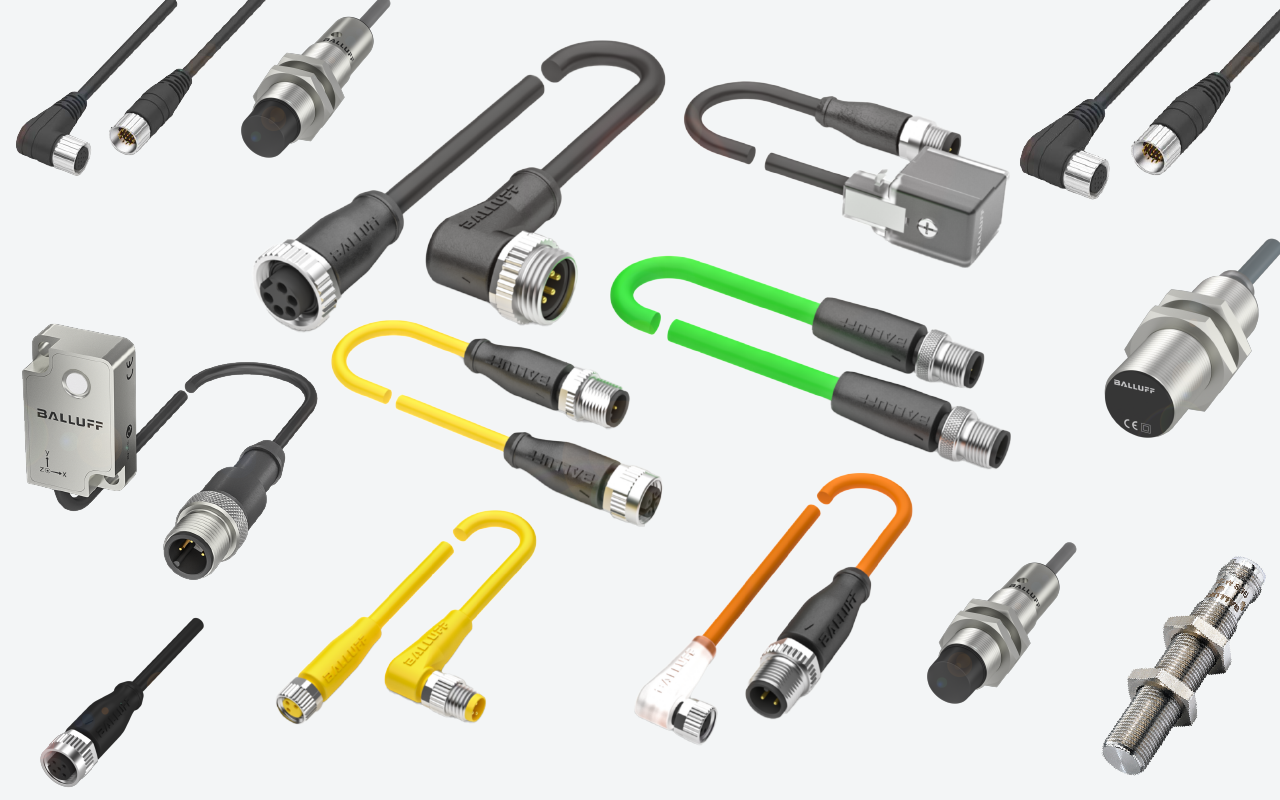
Sensors are an important device commonly used in advanced manufacturing processes to detect a physical phenomenon, generate an output signal, and send data to other systems. In manufacturing, sensors can provide real-time system analysis, ensuring the uptime and safety of your operations. Sensor manufacturers like Balluff offer a diverse array of sensing technology suited for different applications with different operating principles, making it difficult to identify which sensor is the right fit for your application. Balluff makes this process simple with their all new online sensor configurator.
The Balluff product guide for object detection covers a wide range of sensors and technologies designed to enhance automation processes, highlighting their applications in various industries. The guide offers insights into the selection criteria for different sensors based on environmental conditions and specific use cases, ensuring optimal performance and reliability in detecting objects. Here is how you can determine the ideal sensor for your requirements based on using Balluff's product guide.
How the Object is Recognized
- Contactless: For non-contact detection, various sensors are available, chosen based on the distance to the object and the object's material. For detecting specific objects over a larger area or conducting further analyses, camera-based solutions might be more suitable.
- Contactless / directly at the cylinder: For applications requiring direct detection on a cylinder without physical interaction, magnetic sensors are ideal. They detect piston positions through the actuator wall by sensing the magnetic field of the piston's magnet. These sensors provide reliable, wear-free position detection, eliminating contact erosion and ensuring consistent performance, even at high speeds. Various options are available to suit different cylinder designs.
- Detection of liquids and bulk solids: Ultrasonic and capacitive sensors are ideal for measuring liquid levels or bulk materials in various containers. They can detect materials through non-metallic walls and measure levels even without a tank. These sensors are versatile and suitable for different applications based on specific needs.
- Mechanical / Contact: Mechanical sensors are ideal for object detection through physical contact, used in positioning, switch tasks on tools, robots, and assembly equipment. They are also suitable for machine and plant construction. For enhanced security, mechanical switches with safety switch positions are available.
Distance from the Sensor and Material of the Object
If you choose "contactless," you'll then be prompted to choose from different fields regarding the distance from the sensor and the properties of the object.
- Close range and metallic: sensors with short switching distances and high frequencies are ideal. These sensors provide wear-free, reliable detection suitable for various industries and automation processes, even in harsh conditions.
- Close range and magnetic: sensors with short switching distances offer contactless, wear-free operation. These sensors are immune to vibration and dust and feature a compact design.
- Close range and material-independent: sensors enable contactless position detection at short switching distances, unaffected by the material of the object.
- Long range: for contactless detection of far away objects. These sensors can adapt to a various number of environments for different operations, come in different shapes and sizes, and can work with any type of light technology.
Once you select your option, you'll then choose which description best fits your case based on application/usage, then be directed to the product selection.
Design of the Cylinder
If you choose "contactless / directly at the cylinder" you'll then select from different fields how the cylinder is designed, then be directed to the product selection. Here is a list of cylinder designs to choose from:
- Tie rod
- Variable/several groove shapes
- Trapezoidal groove
- T-slot
- Round
- C-slot
Where the Recognition of the Object/Material Happens
If you choose "detection of liquids and bulk solids," you will then select where the object recognition happens, either in the tank/container, outside of the container, or if there's no container. If the object recognition happens outside of the container or if there's no container, you'll be directed to the product selection. If the object recognition occurs in the tank/container, you'll have to choose either from the top of the container or from the side of the container, then move forward to the product selection.
Rotary or Linear Application
If you choose "mechanical / contact," you'll then select if the application is rotary or linear. Mechanical cam switches may be used to control and manage rotary or linear motion. You'll then select the characteristics of the switching point for either option, then be directed to the product selection.
For more detailed information, you can visit the Balluff product guide.

